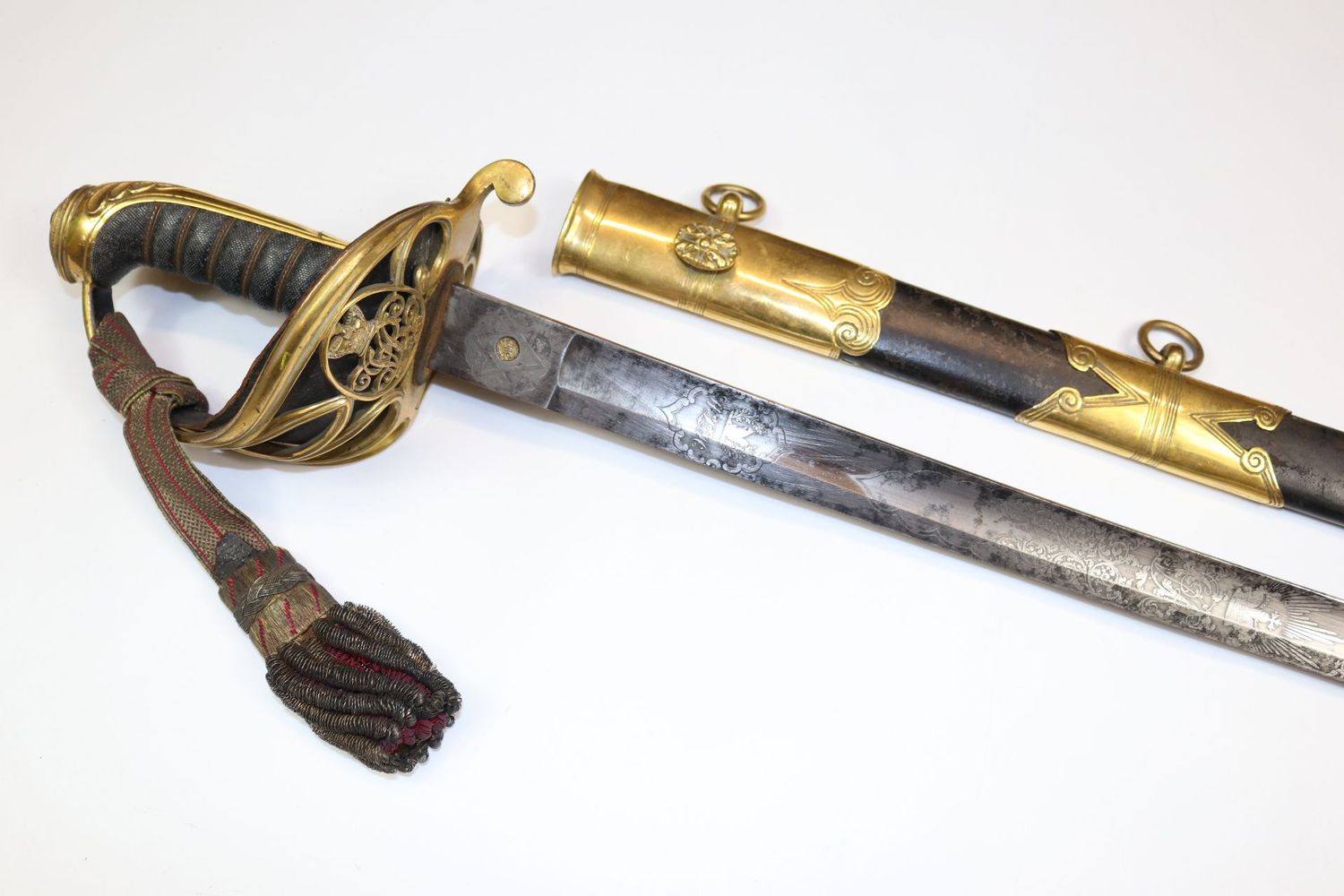Early Wilkinson East India Company Named Bengal Native Infantry Officer's Sword
EL7069 - This is a magnificent early Wilkinson (pre-numbered, dating to 1845-1849, probably 1845-46) East India Company 1845 pattern infantry officer's sword for a named officer of the Bengal Native Infantry. The officer in question being Captain William Lowther Hasell (1816-1849), 44th BNI, who died in Cairo, Egypt, in 1849, aged 32 years. He was the youngest son of E Hasell Esq, of Dalemain, Cumberland. Hasell had graduated as a cadet from the East India Company college at Addiscombe and commissioned into the 44th Regiment of Bengal Native Infantry, then based in Mhow, India, in 1836. He was made adjutant of the regiment in October 1840. In August 1843 Hasell is recorded as a Lieutenant and 2nd in command of the 2nd Oude Local Infantry, but being allowed to go to the Cape of Good Hope for medical reasons. In August 1844 Hasell is still recorded as being absent from the 2nd Oude Local Infantry on medical certificate. He is recorded attending social functions in Cumberland in 1845. By 1846 Hasell is recorded as being a Captain and having returned to England on furlough (this might be when he purchased this new sword) he was returning to India for service in April 1846. I therefore presume that this sword was purchased from Wilkinson in 1845 or 1846. There is a memorial tablet to him at St. Andrew's Church, Dacre, Penrith, reading:
"IN MEMORY OF/ WILLIAM LOWTHER HASELL/ CAPTAIN 44TH REGT BENGAL NI/ YOUNGEST SON OF THE
This portrait of a contemporary officer in the 44th Bengal Native Infantry demonstrates what Hasell's uniform would have looked like: https://collection.nam.ac.uk/detail.php?acc=1979-0...
The sword has been attributed with 100% certainty thanks to the crest (from Fairbairn's book of crests: "Hasell, John Edward , of Dalemain, Cumb. , a squirrel sejant cracking a nut between two oak-branches, all ppr.") and also the clearly etched initials "WLH". It is clear that the sword is nearly a time capsule in condition, because Hasell died only a couple of years after purchasing the sword, upon which it was probably sent home with his other belongings to his family in England.
The sword is in very good condition, with a bright and clean blade (which seems to have been mildly service sharpened), with minimal patina, and very clear etching. The blade is firm in the hilt. The hilt is in excellent condition, together with the correct and original BNI sword knot and black leather guard liner, still both in place from Hasell's lifetime. The brass and leather scabbard is also all present and correct and in very good condition. This is really a fantastic East India Company officer's sword, and one of the earliest Wilkinson swords you can find, being made in the first year of their sword making enterprise (Henry Wilkinson started making swords in 1844 at the earliest), frozen in time due to Hasell's unfortunate demise in 1849. Had he survived until 1857, there is a chance he would have been killed then, as the 44th was one of the regiments that Mutinied and ultimately became the 44th Gurkha Rifles, with Nepalese troops. A fantastic bit of history!

